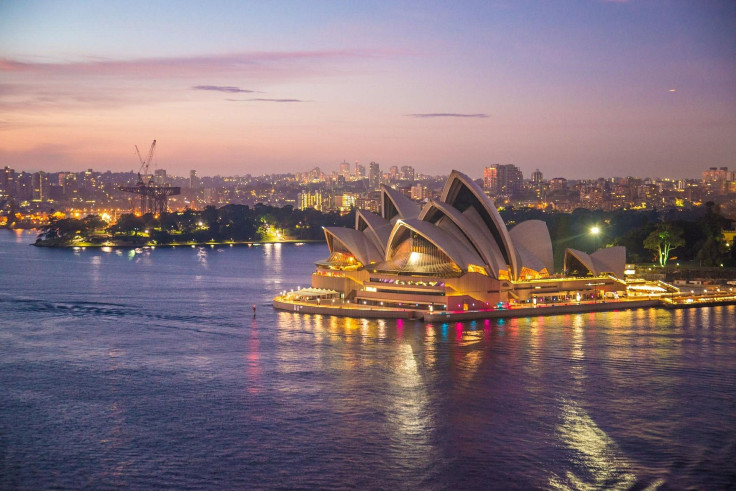Australian Cities Get Smarter But at What Cost?

Across Australia, state capitals and large cities are undergoing a transformation towards a smart city model. Smart cities aim to be more sustainable, make citizens’ lives easier and safer, and use resources more efficiently.
In Sydney, the multi-billion dollar metro project recently saw the delivery of 22 automated and driverless metro trains alongside eight new stations. Further north in Queensland, the Cairns Regional Council has installed a network of smart environmental sensors that measure and track high nutrient, sediment, and chemical traces in urban waterways. The smart sensors for part of the Reducing Urban Impacts on the Great Barrier Reef project, which aims to right some of the wrongs the marine Park has suffered in the last few decades.
Meanwhile, in Coogee Beach, an $800,000 dollar project means smart sensors help visitors to the beach find available parking spaces and even the closest BBQ. Free public wifi, smart weather signs, real-time transportation service information and plenty of CCTV cameras also form part of the Coogee Smart New Technologies at the Beach project. In abid for increased water safety, CCTV surveillance covers the water from multiple angles while connected sensors monitor environmental conditions and feed both sets of information to the state police force.
Cameras equipped with facial recognition technology capabilities debuted in Perth earlier this year. The 30 cameras utilise deep-learning AI to recognise faces and match citizens’ facial data against a database. The blanket surveillance method has drawn sharp criticism as it has in other cities making use of the technology, such as London.
It’s not just facial recognition tech, which is arguably the most glaring example of mass surveillance in the smart city model, that is sparking concerns, either. In Toronto, a waterfront development in collaboration with Google sister company Sidewalk Labs has been mired in pressing questions since one of the project’s leading privacy experts resigned citing privacy issues.
In her resignation letter, Dr. Ann Cavoukian said: “I imagined us creating a Smart City of Privacy, as opposed to a Smart City of Surveillance.” According to the Guardian, Cavoukian later learnt that the data collected by the development would be made available to third parties.
Examples such as these from Perth and Toronto are indicative of the push and pull smart city projects face between ongoing technological progress and citizens’ rights to privacy. At their core, smart cities need data to operate, without mass surveillance of energy usage, foot traffic, vehicle movement, and other aspects of city life, smart projects cannot enact changes. And it is citizens who provide all this data, whether they want to or not.
A key issue is that there’s no chance to opt-in; individuals are surveilled as a matter of course. One would hope that any smart city data collected is depersonalized, made so that individuals’ movements and habits are not identifiable but rather part of the bigger picture. However, given the financial potential of our data, it’s extremely likely that third-parties will bid high in order to get their hands on it. How many municipalities will hold strong against them?
Research has shown that we don’t mind giving up our data in return for tailored perks, such as special deals. But our smartphone browsing habits are one thing and our physical movements quite another.
Also of concern is the ever-increasing risk of cyber attacks. For smart cities to operate seamlessly, the Internet of Things (IoT) is essential. Vast networks of interconnected devices communicate and send information to governmental services and organisations, critical infrastructure, and other bodies. With an increased number of internet-enabled devices, there is a greater number of potential attack vectors for hackers to exploit.
It’s not just small-time criminals looking to enter systems and steal a little data either. Australia has already seen the potential for things to go very wrong, in June the Morrison government announced that the nation was facing attacks from a “sophisticated state-based cyber actor.” Cyber terrorism may seem like the stuff of dystopian fiction, but it has been happening for years now, notably in Ukraine where Russian groups targeted critical infrastructure.
To mitigate both privacy issues and cyber threats, smart city developments need to be built on a model that heavily prioritizes data security and individuals’ rights to their own data. In the meantime, to avoid giving away more information than we want in our increasingly smart cities, we can do the following:
- Use a VPN on all devices. The functions of a VPN include encrypting all data transmissions and replacing a user’s real location with a server's location.
- Keep accounts separate, don’t link accounts such as myGov to other services accounts.
- And most importantly, lobby local politicians to keep privacy at the fore of new smart developments.





















